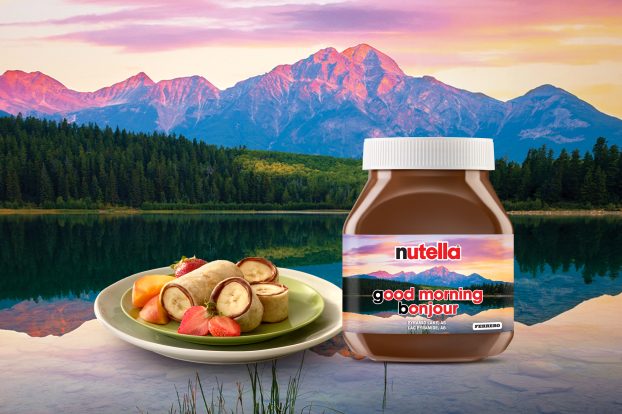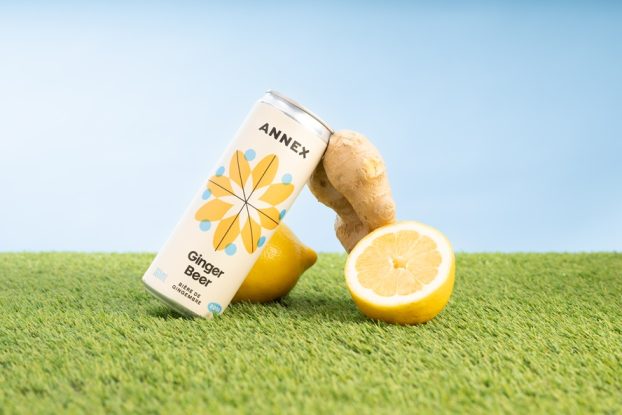The lead time was impossibly tight. The availability of media was not what it could have been. And the market itself is a fiercely competitive one.
In short, developing a campaign for the April 1997 launch of bc tel’s new Affinity plan was no easy task. All of which makes the work of Vancouver’s McKim Media Group West on this effort doubly impressive. Impressive enough, in fact, to earn McKim top honors in Strategy’s second annual Best Media Plan competition.
When the scores from our 11-member panel of judges were tallied, the bc tel initiative owned the highest average score, beating out Leo Burnett Media’s effort on behalf of Cadbury Chocolate Canada for the title of Best Plan Overall.
The bc tel plan also claimed Best Plan for a Budget of More Than $1 million. The Cadbury plan, meanwhile, earned Best Plan for a Budget of Less Than $1 million and Best Use of Magazine, as well as honorable mention in the Best Use of Direct Response category.
Both plans are showcased in this report, along with those others that received outstanding marks from the judges.
Strategy launched this competition in 1997 with the goal of giving greater recognition to the high quality of thinking that goes into the development of Canada’s best media plans – and encouraging greater respect, particularly in the client community, for the creativity and skills of media professionals.
While media is no longer perceived as a dreary, back-office function, it remains, to many marketers, something of a mystery. Anyone, after all, can see where advertising is placed. But an understanding of exactly how plans are conceived is much rarer outside of the media community itself. Through this competition, we hope to help change that.
Strategy asked agency media departments and independent media companies across Canada to review all of their plans that appeared in the market during the 12-month period ending Oct. 31, 1997, and to submit the best of those for consideration.
We instructed them to prepare a summary for each, describing the plan in detail and outlining the results. We were not looking for reams of numbers, or charts and graphs, we explained, but rather trying to get at the quality of the thinking behind the plans: What were the objectives and challenges, as presented by the client, and how were these addressed strategically and creatively?
The judges – all of them media directors or senior planners and buyers – were asked to assign each submission a score from 0 to 10. (Judges were not given media plan submissions for clients with which they compete directly.) Their judgments were made on the basis of: the quality and originality of the strategy and the communications insight on which it was based; the creativity and originality of the media solution; and the plan’s effectiveness as evidenced by sales results or tracking studies.
The winning plans are featured on pages B1-B21. A full list of the winners in all categories can be found on page B3.
Best Use of Out-of-Home – Second Runner-up
Best Plan for a Budget of More Than $1 million – Honorable mention
Agency/Media Company: Les Communications L’Academie-Ogilvy, Montreal
Client: Seagram Canada
Media Team: Carolyn Edge, Associate Director, Media Services; Lucie Charrette, Planner, Media Services; Dominique Santangeli, Planning Assistant/Buyer, Media Services
Timing: April to December 1997
The Background
Seagram’s Crown Royal has enjoyed a leadership position in its spirit category (premium rye) for a number of years. Indeed, it has come to be perceived as the ‘gold standard’ in rye.
In recent years, however, the category has become extremely competitive. It was increasingly clear that a high-impact plan with a twist would be needed to cut through the clutter. But how to reach the established target group of young men, with a clever yet simple message conveying the premium values that Crown Royal possesses? How to re-establish those premium values, which had been jeopardized by previous attempts to create an ‘approachable’ brand? How to build awareness of this gold standard among individuals who, traditionally, are not big consumers of print media?
The Plan
The media plan consisted of traditional vehicles (outdoor posters, magazines and newspapers) used in non-traditional fashion – always bearing in mind the consumer’s profile in terms of media consumption habits (he loves watching and playing sports and spending time with the guys), as well as Crown Royal’s premium positioning.
First, outdoor posters were used as a base medium to ‘set’ Crown Royal in the consumer’s mind. Posters made it possible to rapidly generate both reach and frequency against a mobile target group.
But how to get their attention and keep it? Simple: Tell them a story. The creative team developed a basic yet intriguing story, the essence of which involved the Crown Royal bottle disappearing and returning, over and over. A total of nine executions over 28 weeks (12 in spring and 16 in fall) showcased ‘The Heist’ in 18 markets across the country.
Medium to heavy weight levels were planned, with a twist: no split postings and no rotation in locations, because the answer had to cover the preceding question, in order to avoid creating confusion and to keep the consumer intrigued. This necessitated negotiating with outdoor suppliers willing to accept these conditions in all markets. After many discussions, only Mediacom proved prepared to hold more than 350 locations across the country for such a long period.
Due to stringent regulations prohibiting the use of outdoor for liquor advertising in b.c., Saskatchewan and Manitoba, newspapers were substituted in the urban centres of those provinces. The target is known to keep up with sports news, a subject near and dear to his heart. So the sports sections of daily newspapers were booked, along with sports weeklies, using creative that emphasized this positioning, while creating a play on words that hit home for the consumer.
Once again, frequency and impact were key: The campaign began with two consecutive right-hand pages (rhps), and then quickly moved to a single-page execution. It ran for the same 28 weeks.
Finally, magazines rounded out the media plan, with a selection designed to hit home with the consumer. Professional sports event programs and hobby and outdoor activity titles were added to mainstays such as TV Guide and Feature magazine. Once again, the creative rotation consisted of two consecutive rhp and several single-page executions.
An added-value component of the magazine campaign allowed Crown Royal to stretch its advertising dollar. Magazines were approached with the opportunity to build on the creative, in the hope of extending the campaign and increasing the impact. For example, Network magazine ran a promotion building on the two consecutive rhp, by adding a third page that offered readers a chance to win a cd collection. They simply lifted elements of the existing creative and inserted promotional details.
In addition, a number of sports event programs – including the Toronto Raptors and cfl publications – ran a ‘lucky program’ promotion: Fans at the game were encouraged to turn to the Crown Royal ads, and if their copy had been specially marked, they won a Crown Royal prize pack. It proved an effective way of coaxing the consumer to read the message.
TV Guide and Outdoor Canada both offered multiple small-space ads, each playing upon their editorial theme. Other publications offered variations of their own.
The Results
While quantitative results are available only for the outdoor portion of the campaign at this time, all indications suggest that this has been a breakthrough effort for Crown Royal. Unaided awareness of the brand increased by a whopping 27%. In addition, advertising awareness posted a colossal 49% above outdoor ad norms.
Looking to outside sources, Crown Royal has twice made Strategy’s ‘Dominance by Brand’ list (July 1997 and February 1998) in the outdoor category and moved up in rank with each appearance.
The most compelling results, however, are sales themselves. By the close of 1997, Crown Royal had posted an unheard-of 6.7% increase in sales. By the end of the first flight (spring 1997), it had already surpassed the No. 1 brand, Canadian Club.
This is proof positive that a media plan tailored to respond not only to the demographic, but also to the psychographic characteristics of the target group, and married to creative that delivered a pertinent, intrusive and involving message, was key to the campaign’s success.
Also in this report:
– BC TEL creates excitement p.B1
– The winners p.B3
– Cadbury hops down mythical trail p.B3
– Dairy Farmers of Ontario milk Watch & Win competition p.B4
– Toyota drives dynamic plan p.B5
– DFO pitches ‘Milk Energy’ message p.B6
– United Distillers shows there’s more to explore: Multimedia cmapaign for Johnnie Walker Black Label leveraged longstanding partnership with performing arts p.B8
– Sony delivers credible message with no waste: National campaign for Walkman and Discman was executed for under $500,000 p.B10
– Rothman’s adopts guerrilla media tactics: Dunhill brand targets alternative audience through use of teasers and ‘new’ media p.B14
– PlayStation targets kids in their own backyard p.B19
– The judges p.B22























